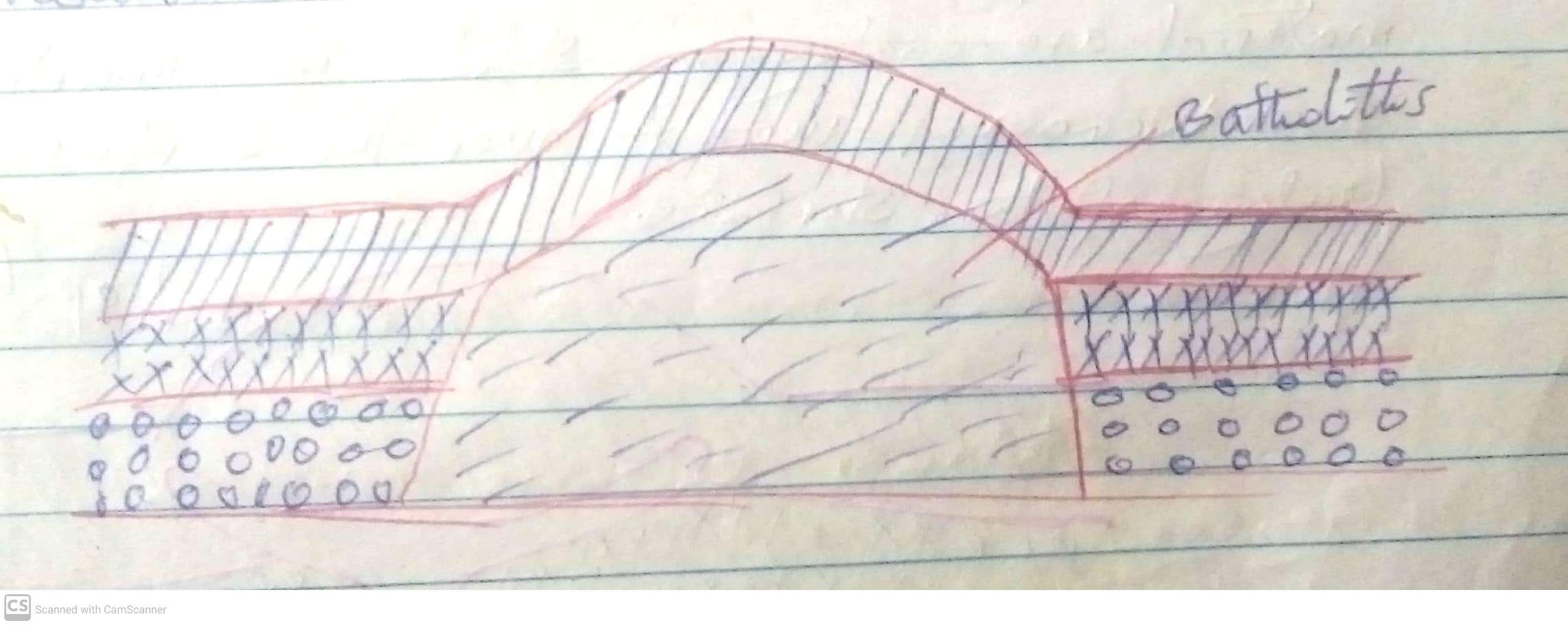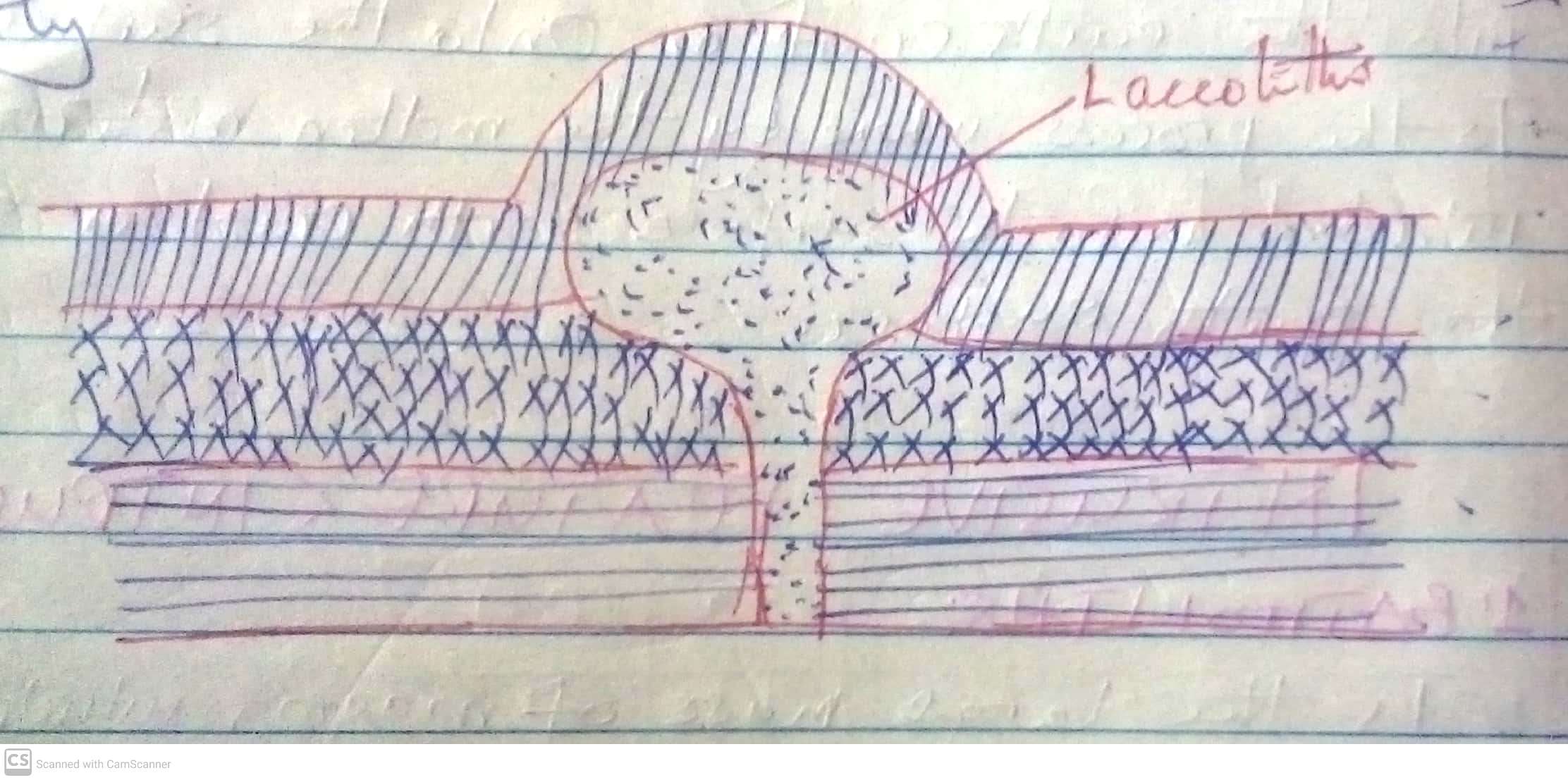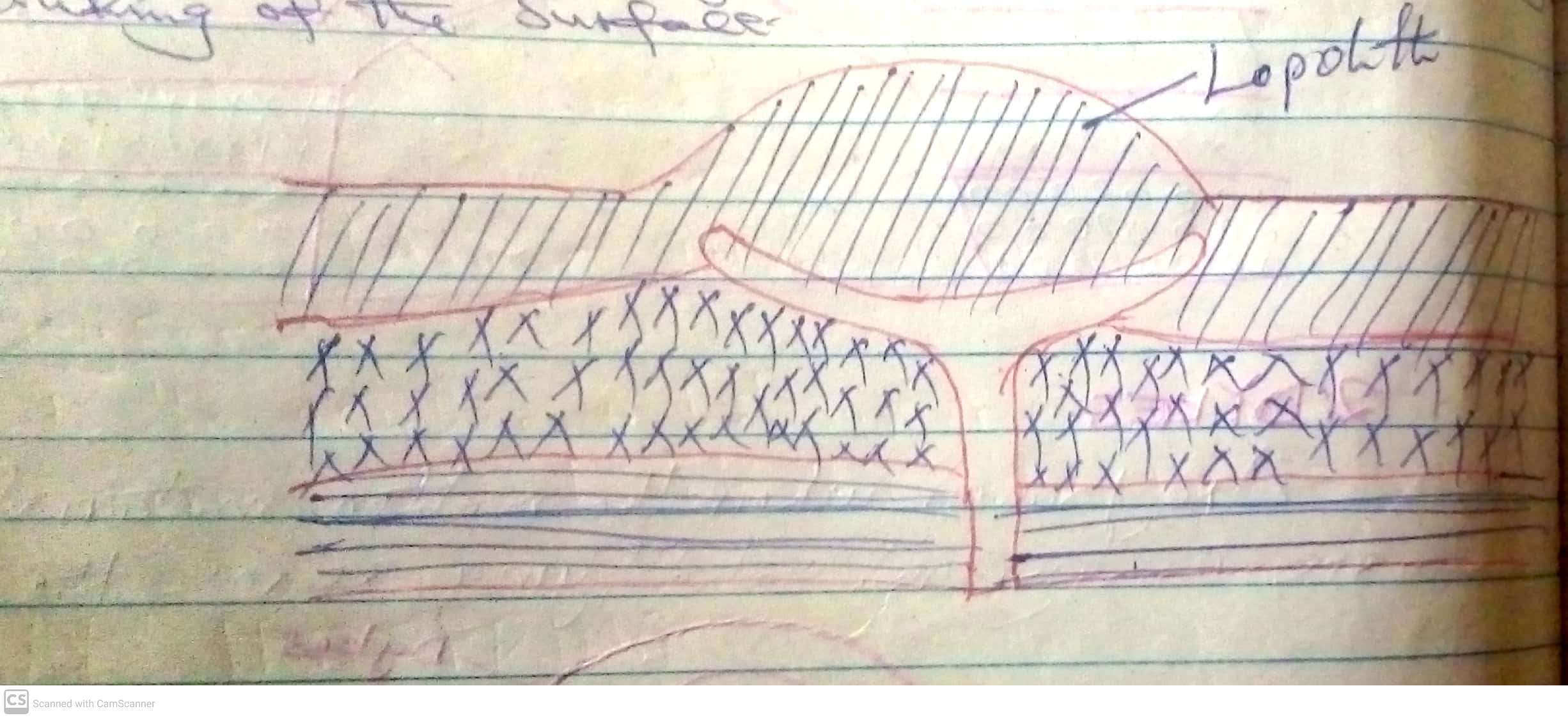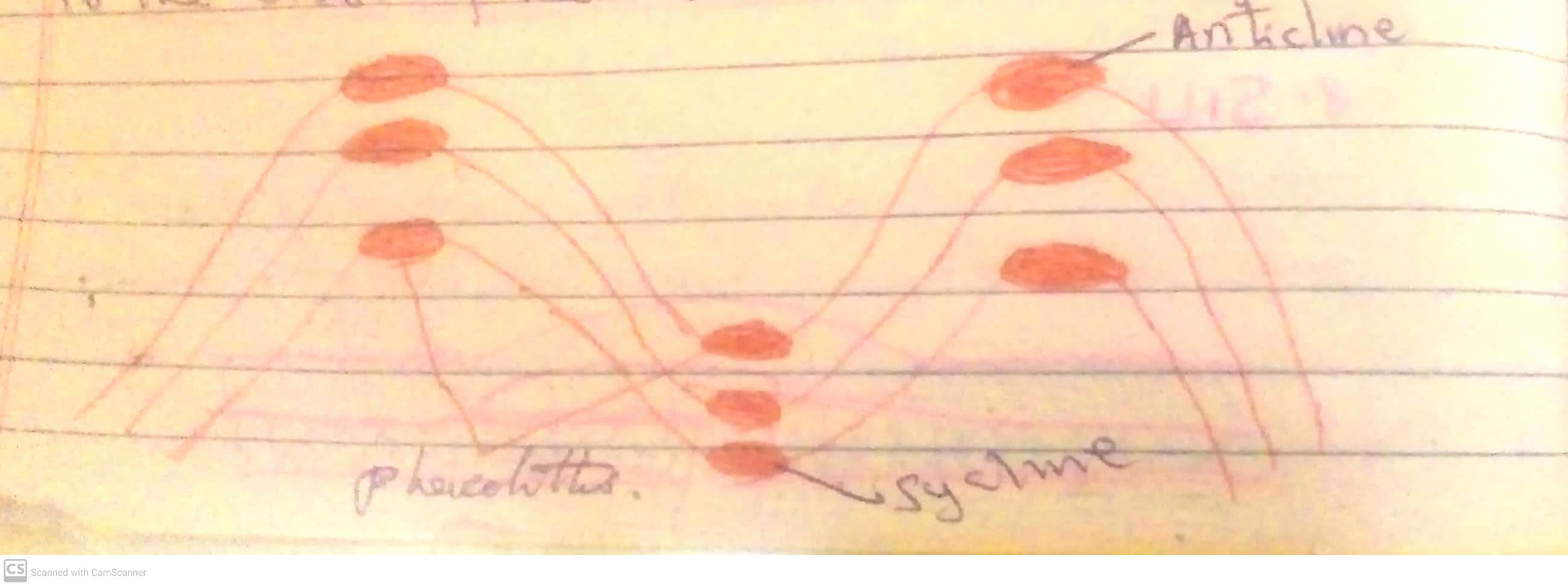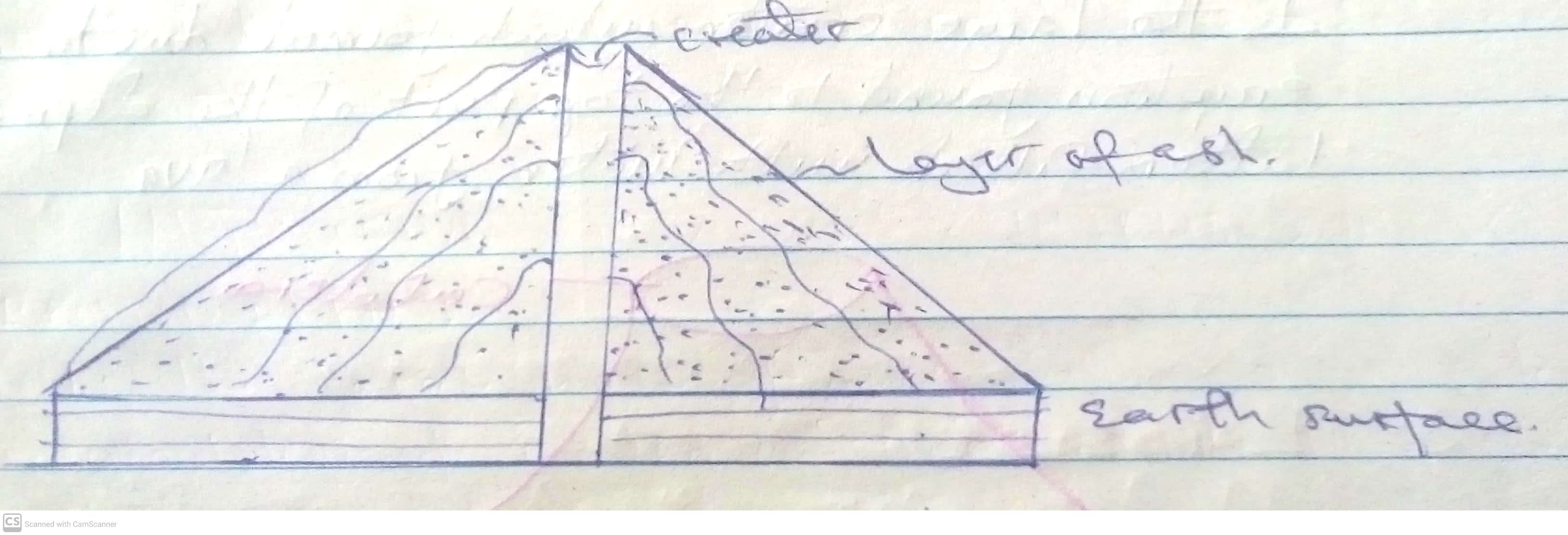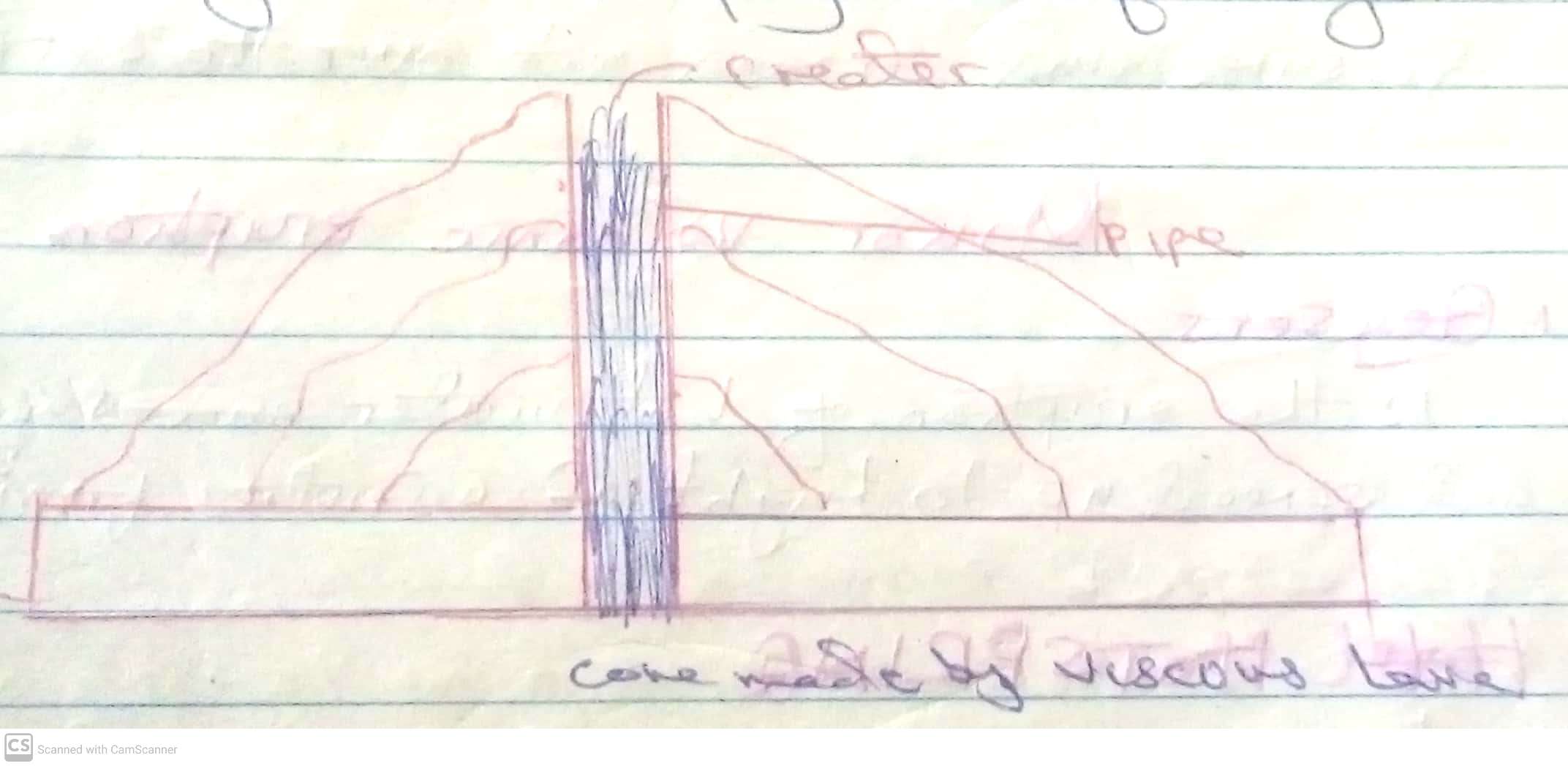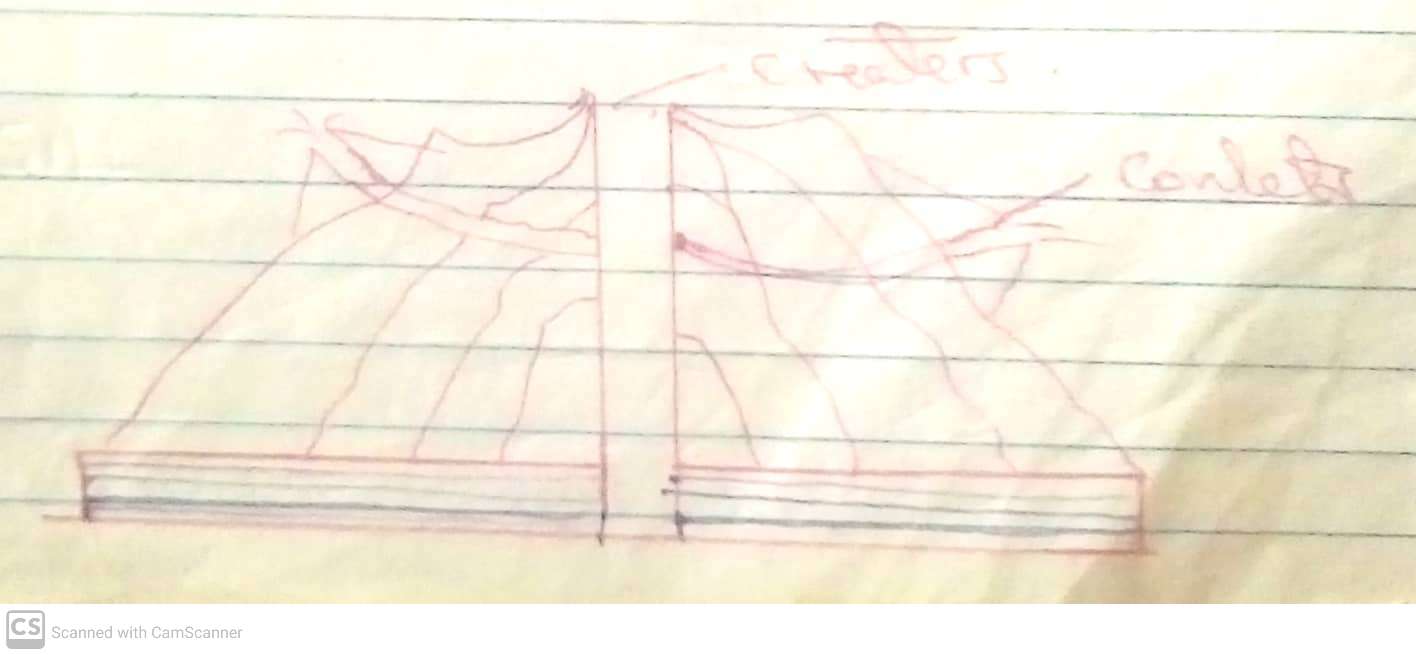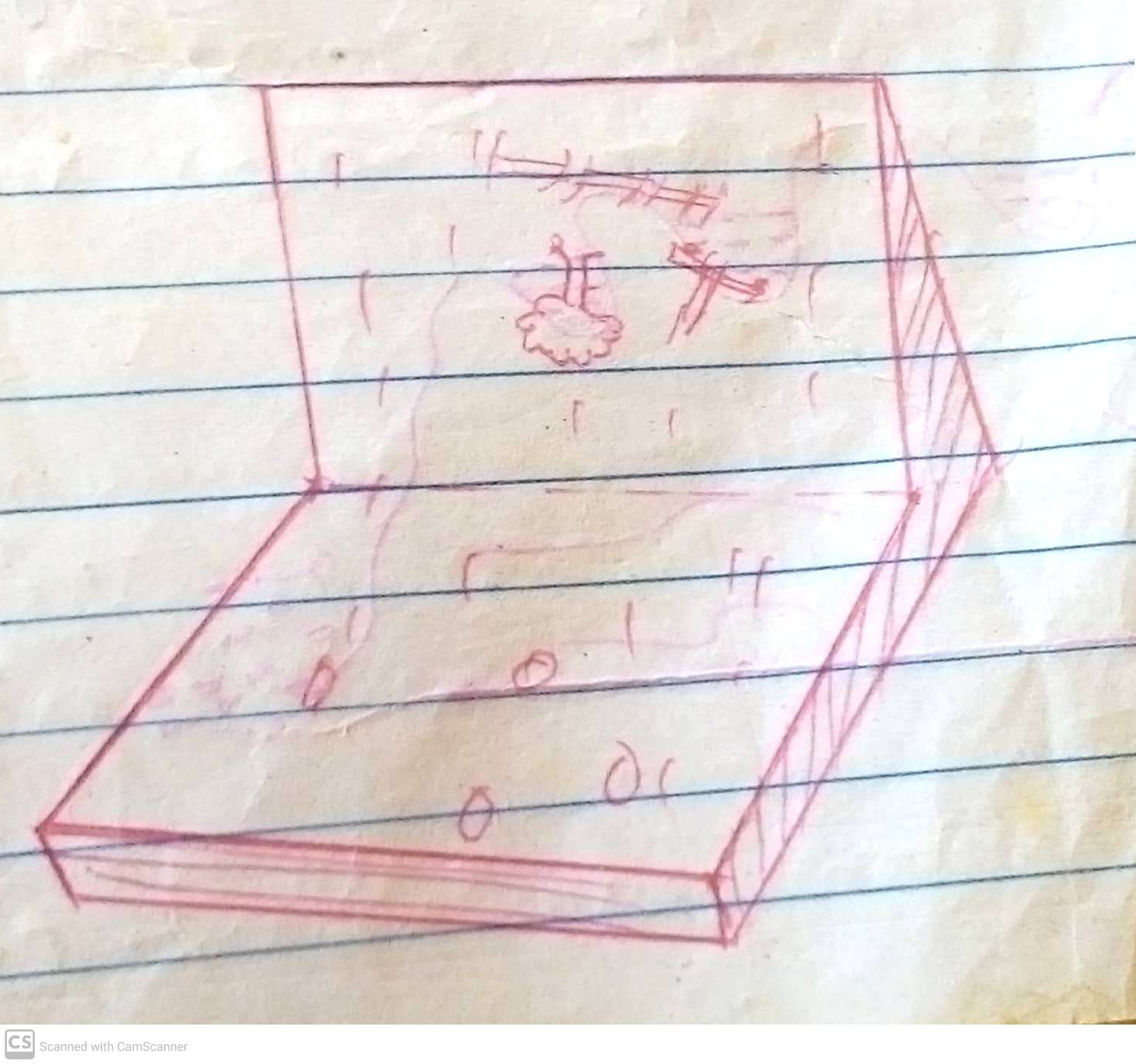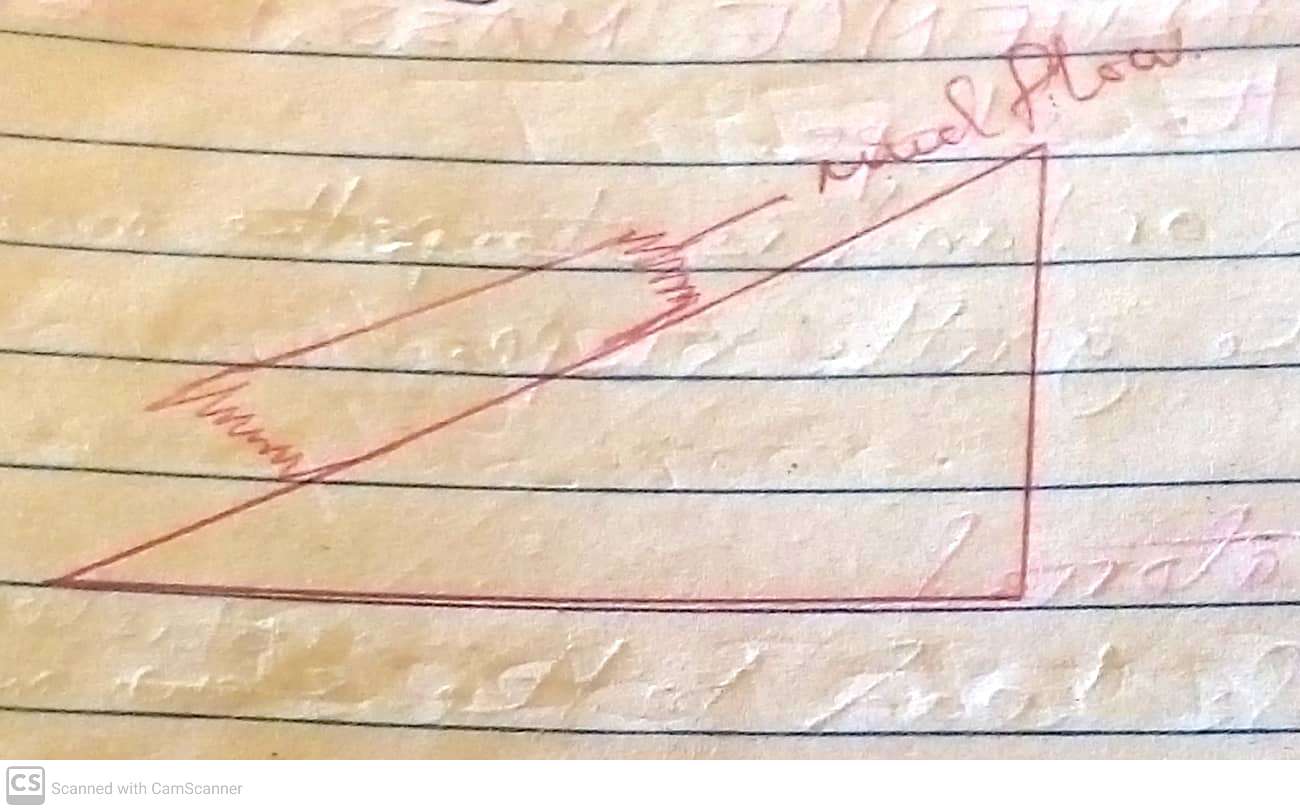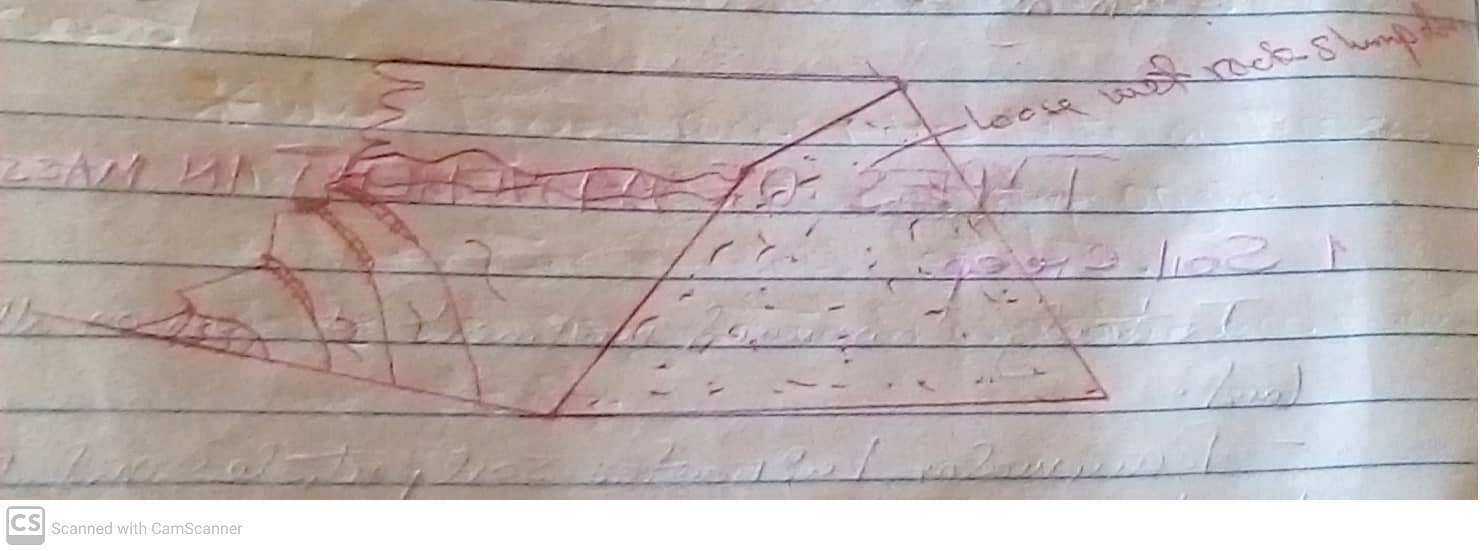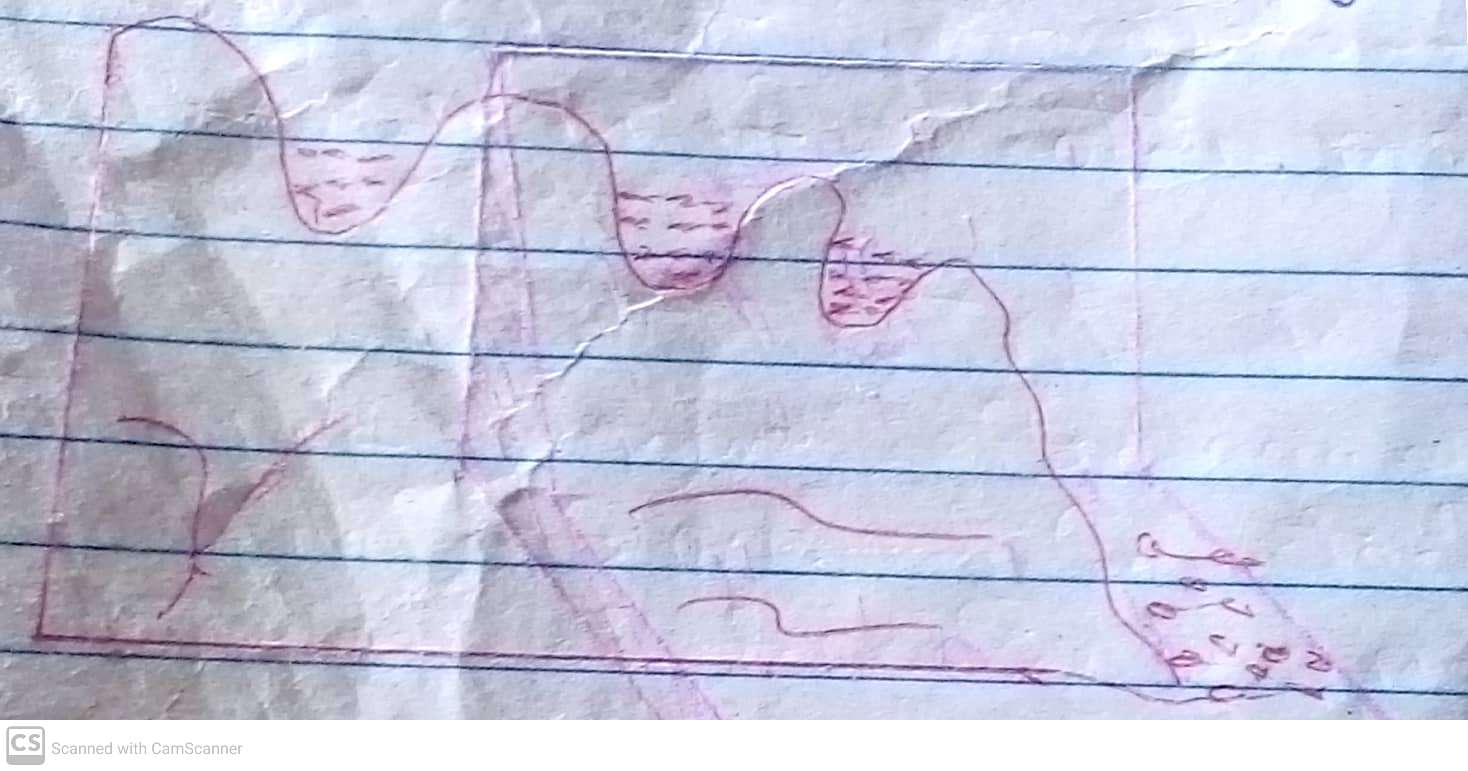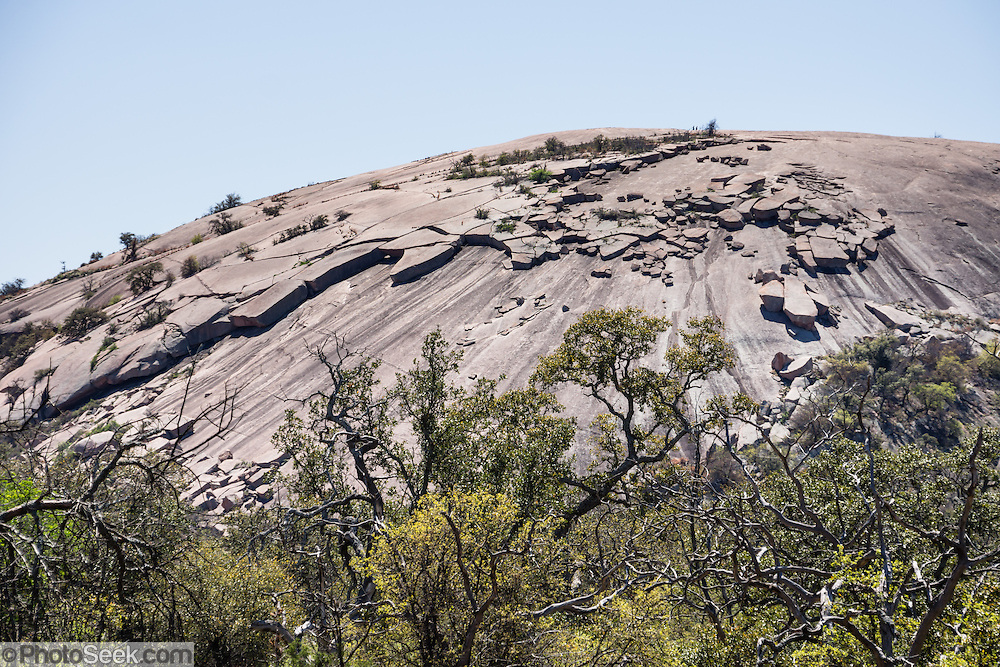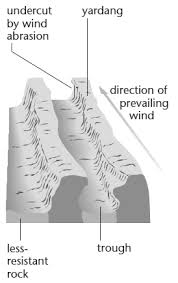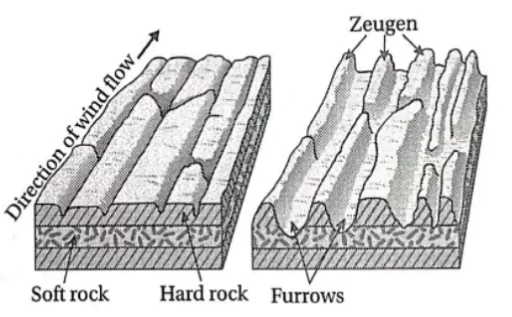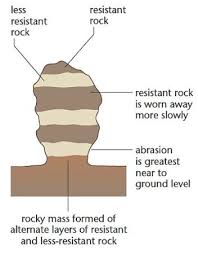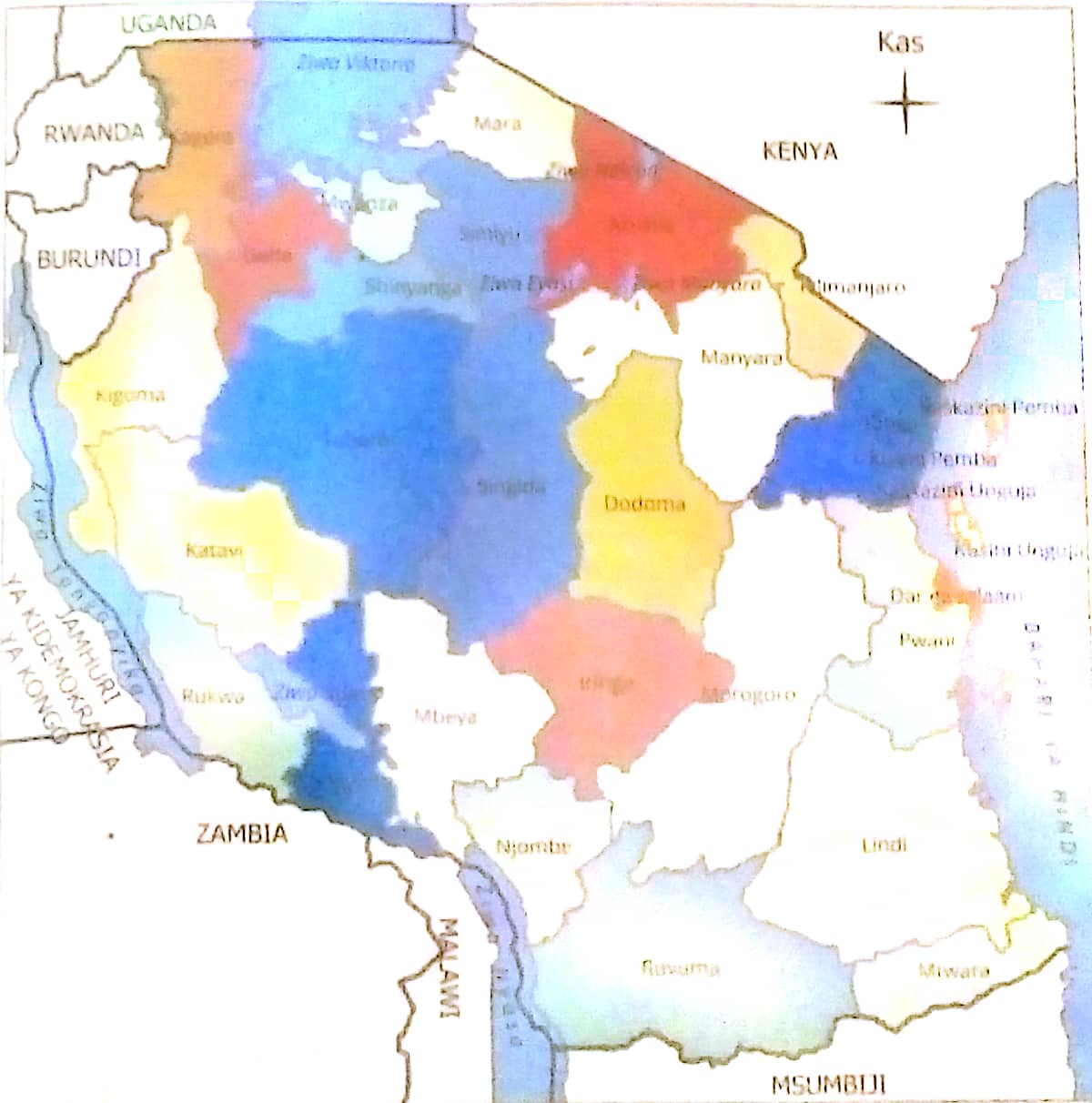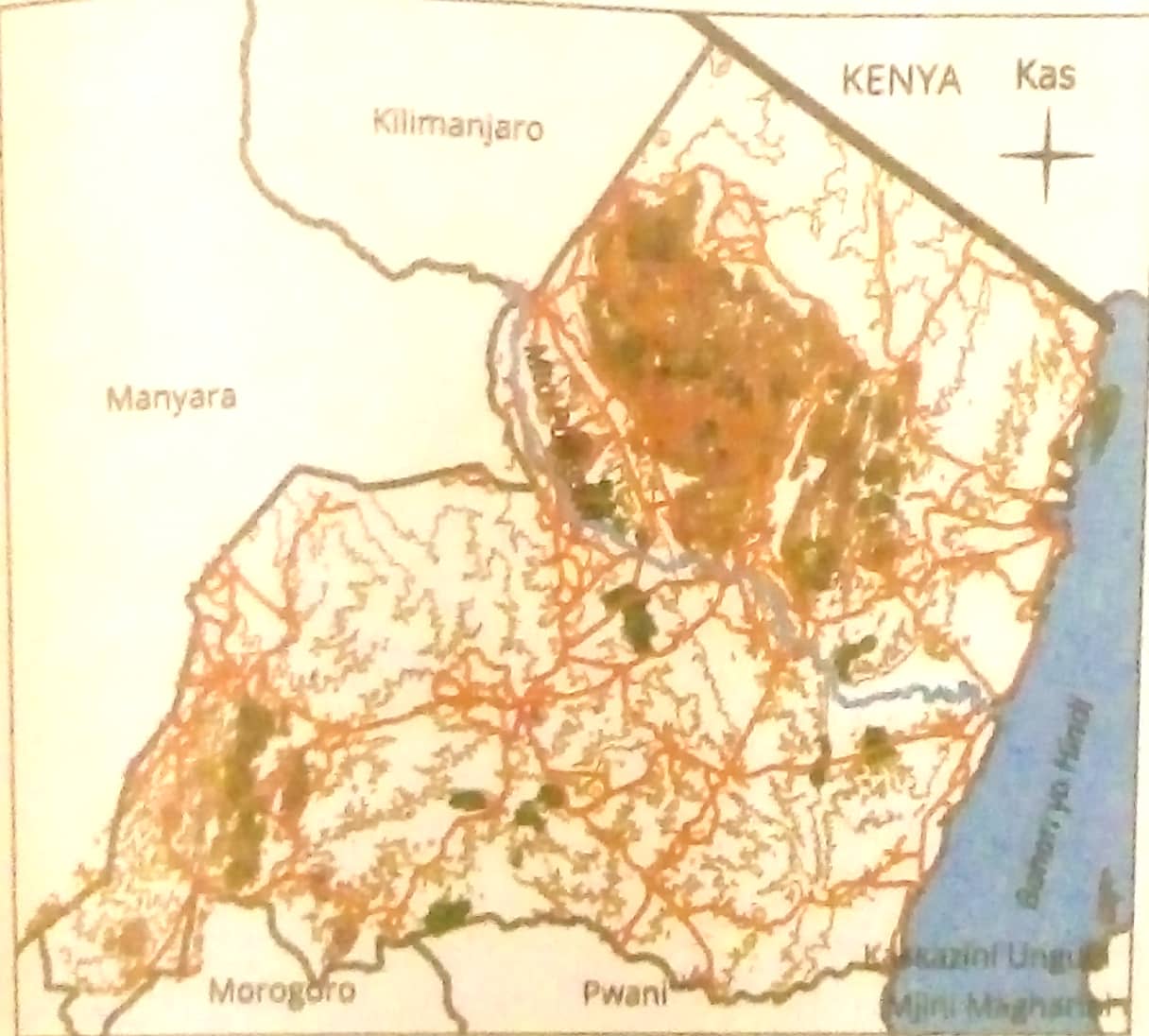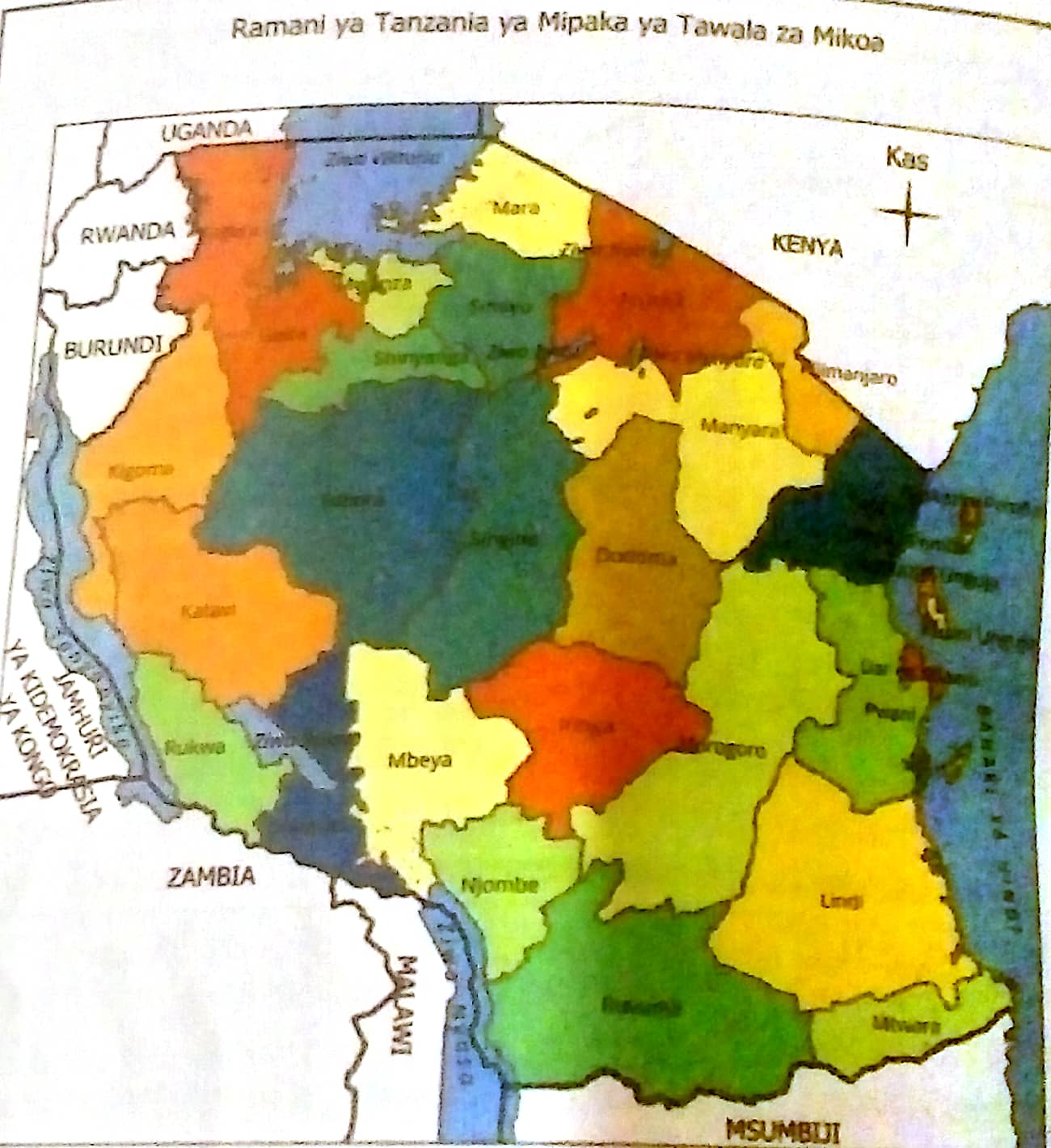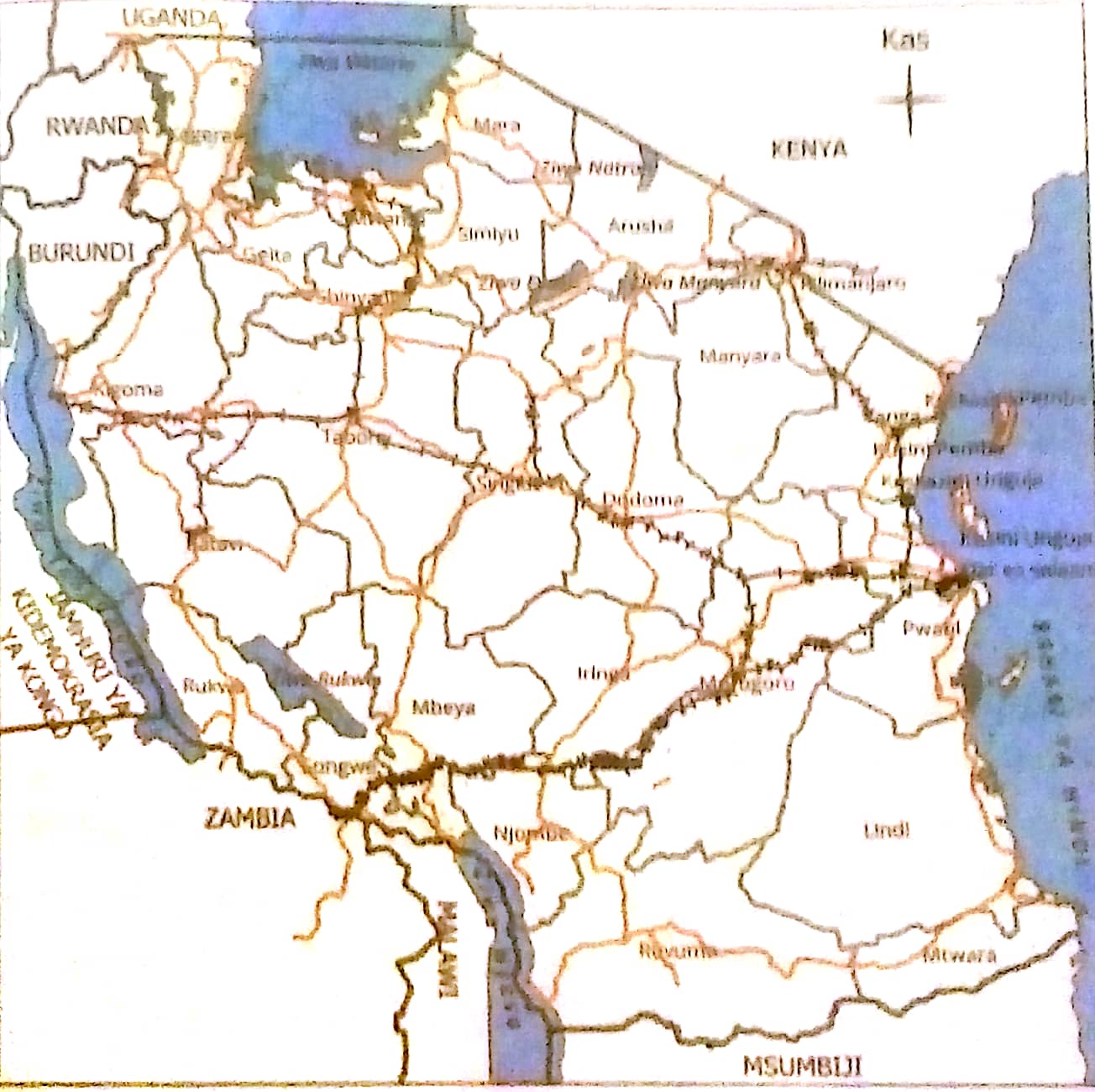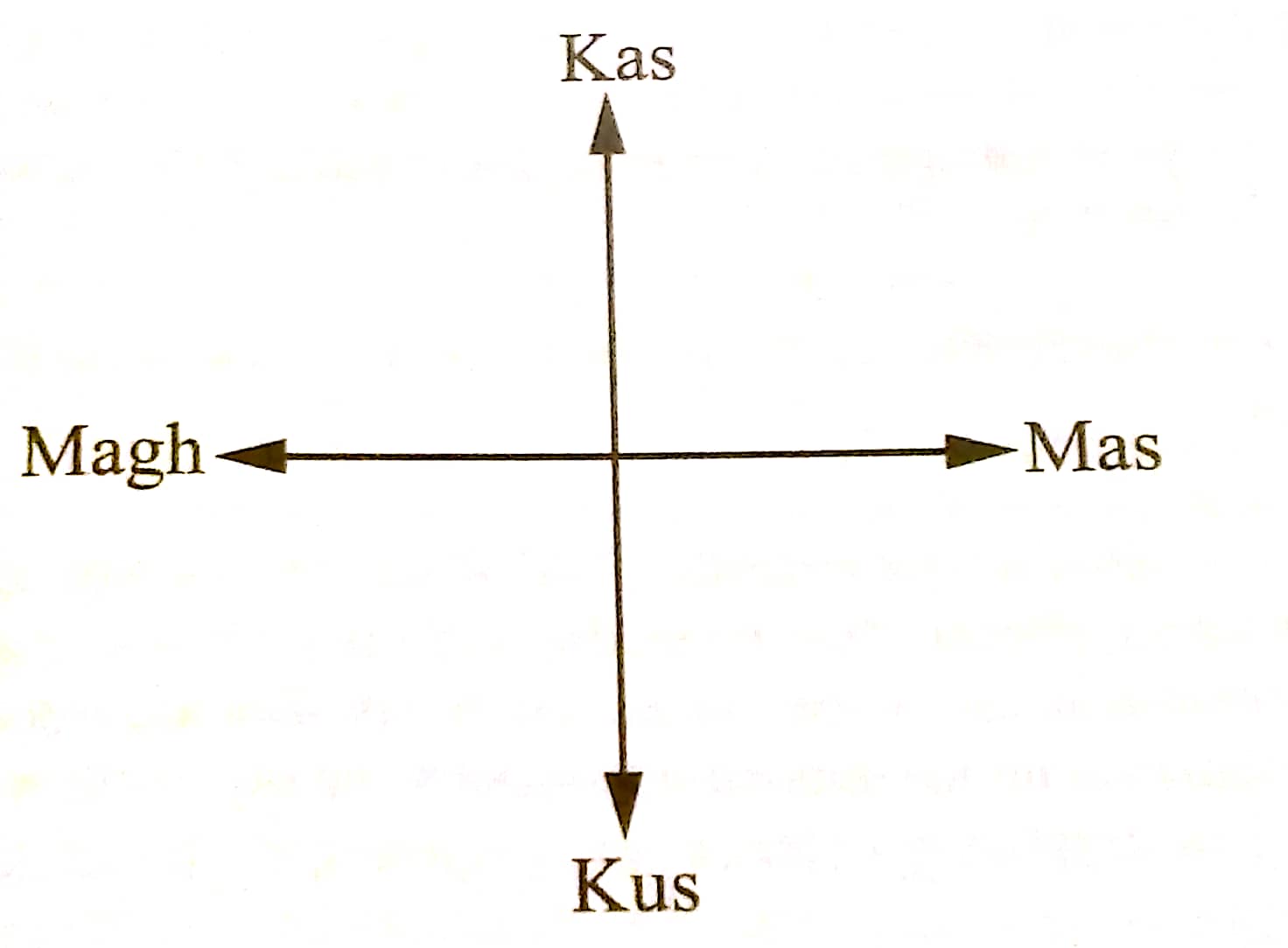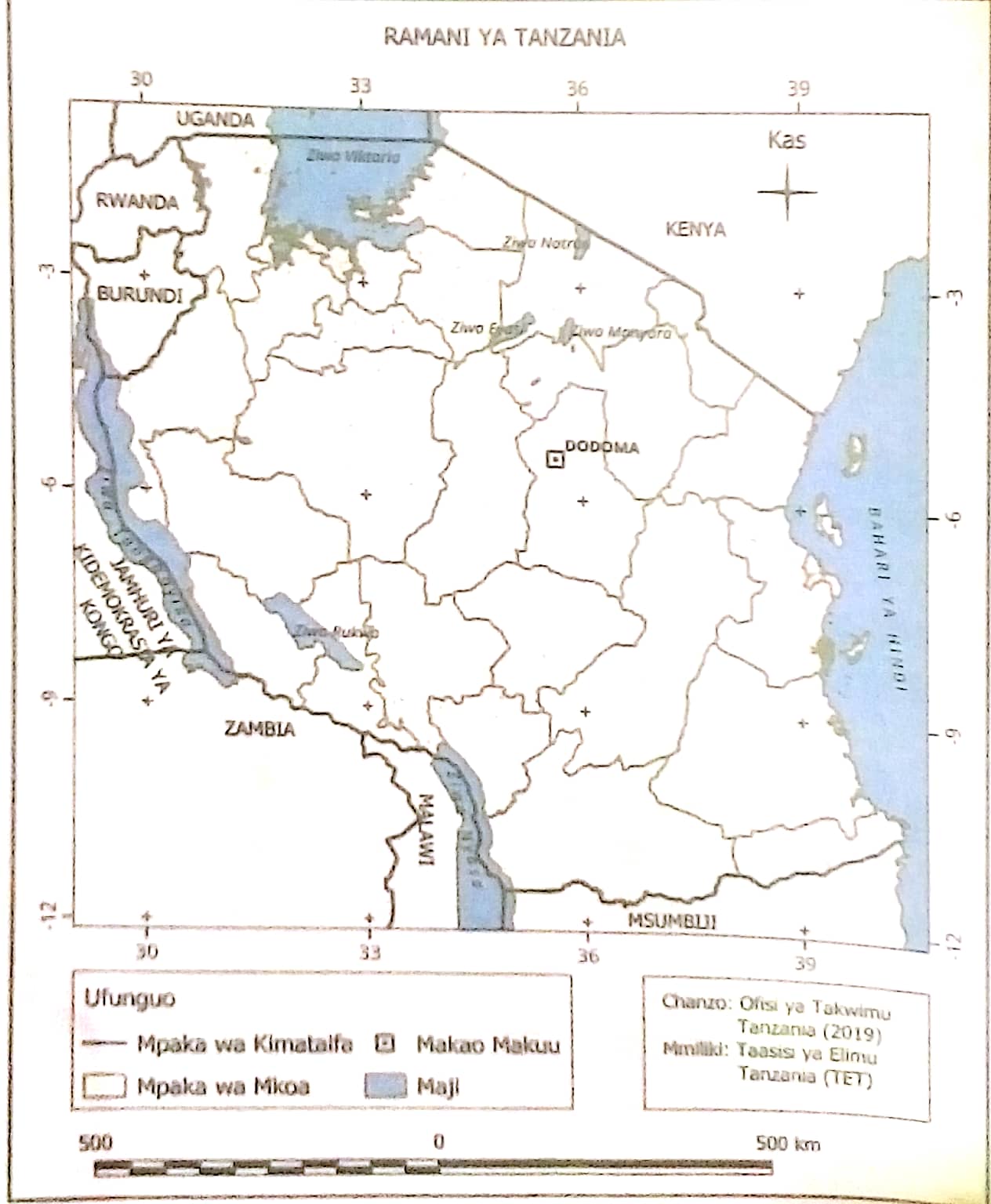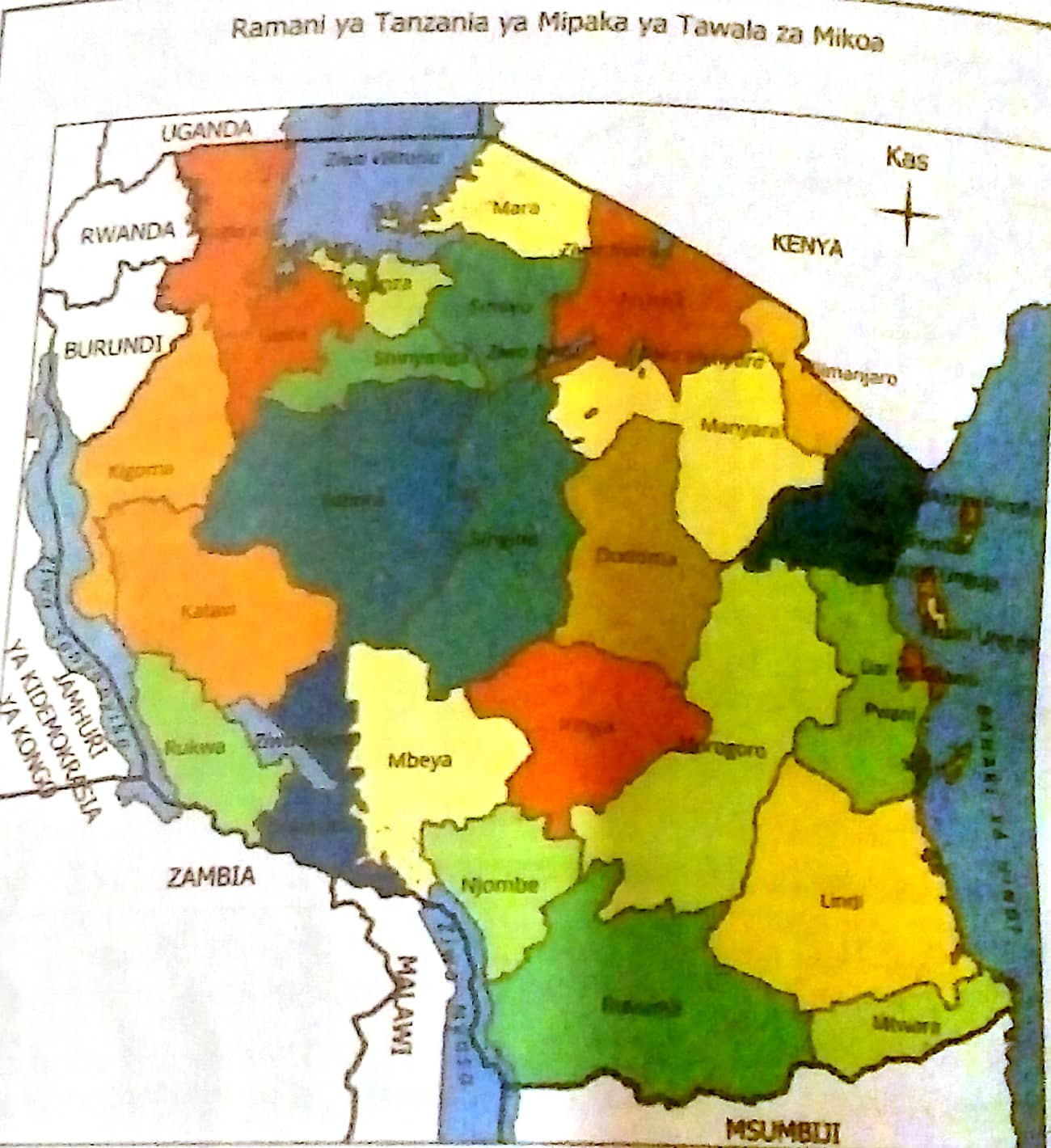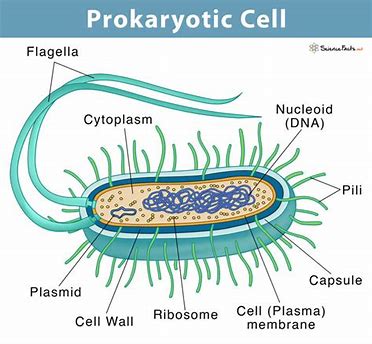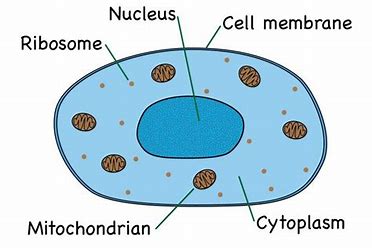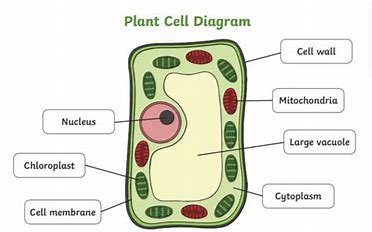Maana ya ramani
Ramani ni mchoro ambao huchorwa kwenye karatasi, ubao laini na mnyoofu, vipande vya nguo,ukutani na sehemu Ramani huchorwa kwa njia mbalimbali kama vile kwa mkono na kwa kutumia programu na mifumo ya kompyuta.Uchoraji wa ramani hutegemeana na matumizi.
Aina za ramani
Kuna aina mbili za ramani ambazo
1.Ramani za jumlaHizi ni ramani zinazotoa taarifa za jumla kuhusu eneo fulani.ramani hizi hazitoi taarifa moja pekee bali hutoa taarifa mbalimbali za eneo husika mfano Barabara,mito,mipaka ya kiutawala, makazi ya watu milima na uoto.Ramani za jumla ni kama vile Ramani za topografia, Ramani za kisasa, Ramani za Barabara na reli
Ramani za topografia
Hizi ni ramani zinazowakilisha mwonekano wa maumbo mbalimbali ya asili na ya kutengenezwa na binadamu yanavyoonekana katika uso wa dunia mfano bahari,tambarare,mabonde,milima,uoto, majengo na Barabara
RAMANI YA TOPOGRAFIA YA MKOA WA TANGA
Ramani za kisasaHizi ni ramani zinazotoa taarifa kuhusu mipaka ya nchi,mikoa wilaya na maeneo mengine ndani ya nchi
RAMANI YA TANZANIA KUONESHA MIPAKA YA TAWALA ZA MIKOA
Ramani za Barabara na reli
Ramani hizi zinatoa taarifa muhimu kuhusu mitandao ya Barabara na reli kama vile Barabara kuu,mitaa na alama muhimu za eneo fulani
RAMANI YA MTANDAONI WA BARABARA NA RELI TANZANIA
2.Ramani za thematikiHizi ni ramani zinazowasilisha mada au taarifa moja maalumu au pekee.Ramani hizi zinaweza kuwa za kuwasilisha aina za udongo, uoto, mazao, idadi ya watu hali ya hewa na mipango miji.
VIPENGELE MUHIMU VYA RAMANI
1.FREMU:Ni mpaka au mstari wa nje unaozunguka ramani.Fremu inasaidia kuweka wazi mipaka ya ramani na kuitenganisha na taarifa nyingine kwenye ukurasa.
2.KICHWA CHA RAMANI:Husaidia kuitambulisha ramani kwa msomaji kuwa ramani inahusu nini.
3.DIRA(uelekeo wa kaskazini): Husaidia kuonesha uelekeo katika ramani ambao kwa kawaida huwasilishwa na alama ya ncha ya kaskazini.Alama hii inamwezesha msomaji kubaini pande zingine za dunia katika ramani kama vile Mashariki,Magharibi, Kaskazini na kusini.
PANDE KUU NNE ZA DUNIA
4.UFUNGUO: Hufanya kazi ya kufafanua ishara na alama zote zilizotumika katika ramani.
5.SKELI:Hii Hufanya kazi ya kuonesha uhusiano wa umbali uliotumika katika ramani na umbali halisi katika ardhi.mfano sentimeta moja kwenye ramani inawakilisha kilometa kumi kwenye ardhi
6.MISTARI YA GRIDI:Hii ni mistari inayogawanya ramani katika miraba.Mistari hii inasaidia kuweza kupata maeneo mahususi kwenye ramani.Kila mraba una namba au herufi inayokusaidia kupata vitu kwa urahisi
7.CHANZO:Kunaeleza mahali palipotumika kupata taarifa zilizowasilishwa kwenye ramani
Ramani ya Tanzania kuonesha vipengele muhimu vya ramani
SIFA ZA RAMANI
1.Isomeke na kutafsiriwa kwa urahisi
2.Ioneshev vipengele vyote muhimu vya ramani
3.Iwakilishe maeneo na umbali halisi pamoja na kuweka vitu kwa usahihi
4.Itumie rangi na maandishi yanayoonekana ili kumsaidia msomaji kuelewa vizuri
5.Ioneshe taarifa pekee zinazohitajika kwa madhumuni husika
6.Itumie alama,rangi na mitindo inayofanana kwenye ramani
7.Iwe na taarifa za hivi karibuni ili kuhakikisha kila kitu kinachooneshwa ni sahihi.
UMUHIMU WA RAMANI KATIKA MAISHA
1.Kujifunza kuhusu maeneo mbalimbali
2.kufahamu umbali kutoka sehemu moja hadi nyingine
3.kufahamu uelekeo wa kufuata ili kufika tulikokusudia
4.kupanga safari zetu kwa kubaini Barabara Bora, njia za mkato
5.kuyafahamu mazingira yetu na vitu vilivyomo
6.kusaidia kujifunza kuhusu hali ya hewa katika maeneo mbalimbali
7.kuonesha mahali ambapo rasilimali muhimu za nchi zinapatikana
8.kuonesha makazi na idadi ya watu katika maeneo tofauti
9.kujua mipaka ya kiutawala
10.kuonesha vivutio vya utalii mf.mlima Kilimanjaro
11.Kusaidia kuelewa historia ya mahali kwa kuonesha jinsi palivyobadilika
KIPIMIO CHA RAMANI
Ni uwiano kati ya umbali halisi na umbali ulioko kwenye ramani.
Zipo aina tatu za ramani ambazo ni
1.Kipimio kikubwa cha ramaniHiki ni kipimio ambacho hutumika kuwakilisha maeneo madogo kama vile majengo, viwanja vya michezo na mashamba. Kipimio hiki huoneshwa kwa tarakimu kati ya 1:5,000 au 1:10,000 na 1:25,00
2.Kipimio cha kati cha ramani
Hiki ni kipimio ambacho hutumika kuwakilisha maeneo ya miji, mkoa na wilaya. Kipimio hiki huoneshwa kwa tarakimu za kati ya 1:50,000 na 1:250,000.
3.Kipimio kidogo cha ramani
Hiki ni kipimio ambacho hutumika kuwakilisha maeneo makubwa sana kama vile nchi, mabara na dunia. Kipimio hiki huoneshwa kwa tarakimu zenye thamani kubwa kati ya 1:5000,000 na 1:1,000,000
Uwasilishaji wa ramani Kipimio cha ramani kinaweza kuwasilishwa kwa njia tatu ambazo ni
1.Njia ya sentensi
Mfano:Namna ya kuonesha kipimio hicho kwa njia ya sentensi itakuwa:"sentimeta moja kwa kilometa moja"
2.Njia ya uwiano au sehemu Njia hii ya kuonesha kipimio cha ramani Kwa uwiano au sehemu vikiwa katika thamani au vipimo vya aina moja kwa mfano 1:50,000 au humaanisha sentimeta moja kwenye ramani inawakilisha sentimeta elfu hamsini kwenye ardhi.Ikiwa sentimeta moja kwenye ramani inawakilisha kilometa moja kwenye ardhi ni lazima kilometa hiyo moja ibadilishwe kwenye sentimeta
Km1=M1000
M1=Sm100
Kwa hiyo Km1=Sm100×1:100,00Kwa njia ya uwiano hii itaoneshwa hivi
1:100,000Kwa njia ya sentensi itaoneshwa hivi
¹/100,0003.Njia ya mstariNjia hii mstari huchorwa na kugawanywa katika sehemu mbili.sehemu ya kwanza kipimio kimegawanywa katika sehemu ndogondogo na sehemu ya pili inaonesha vipimio kamili
